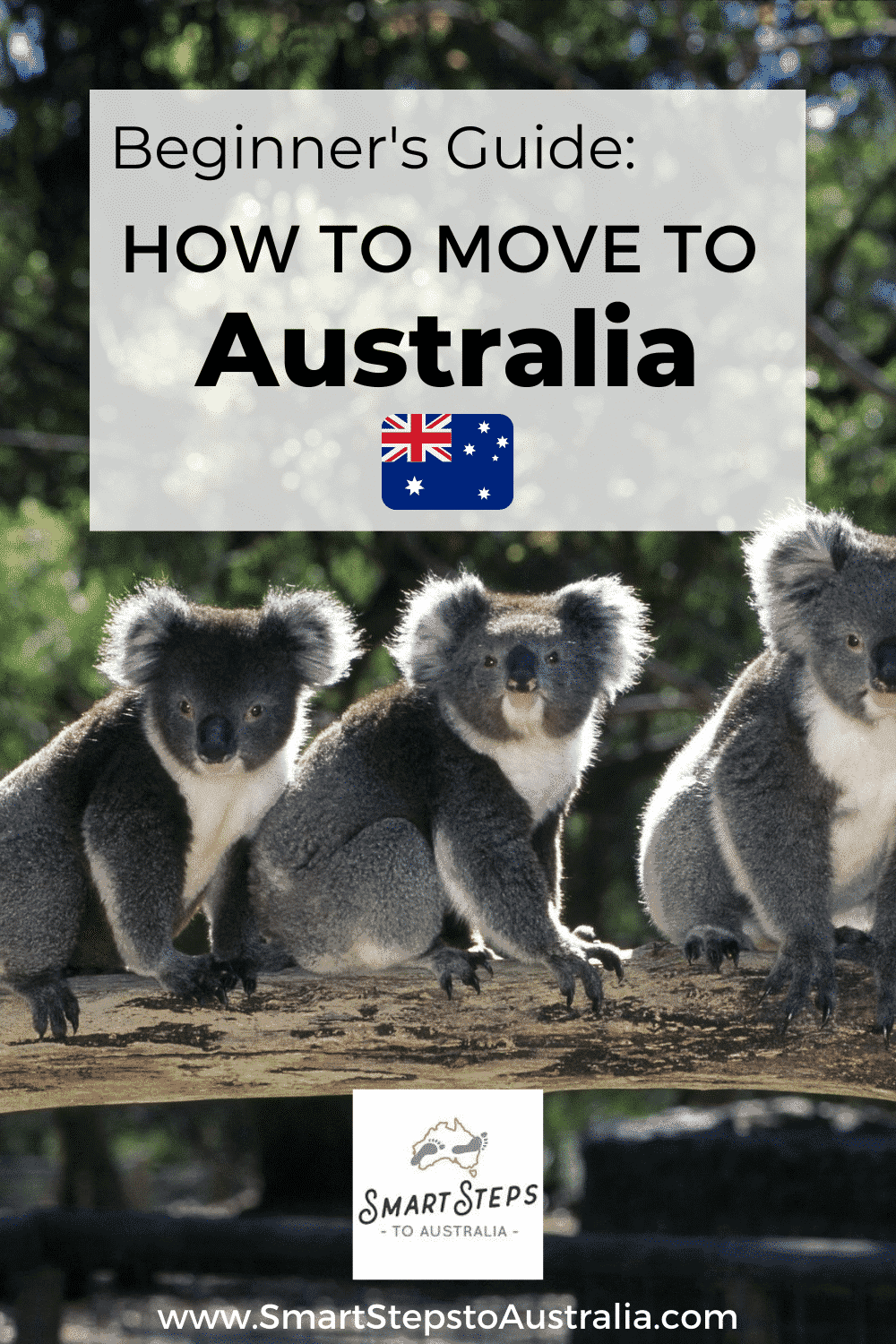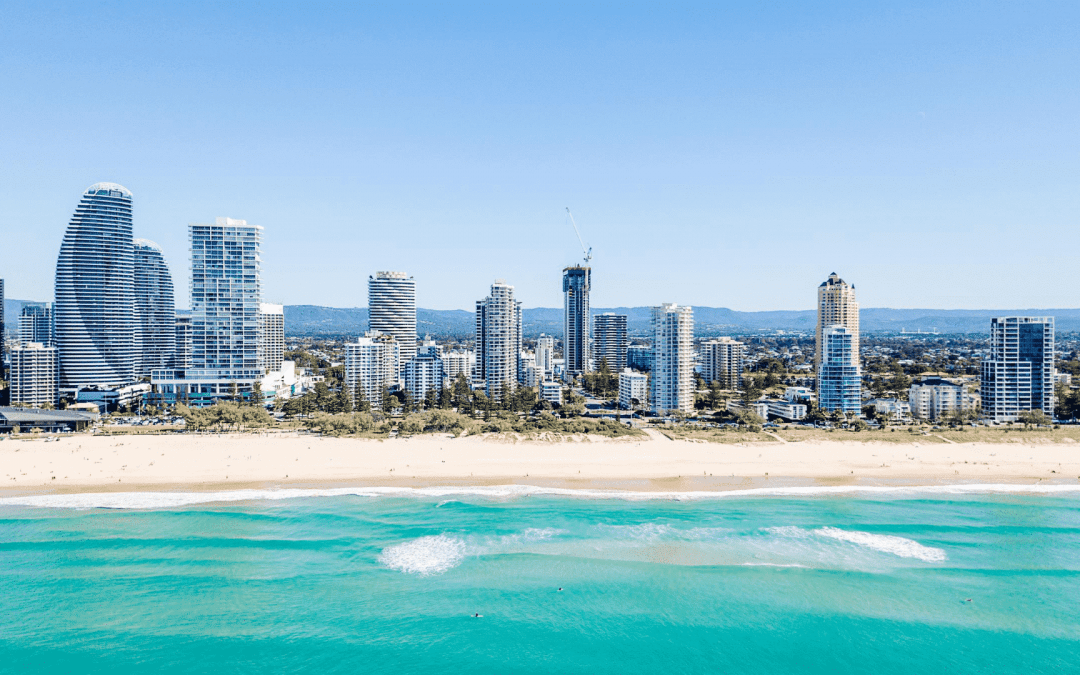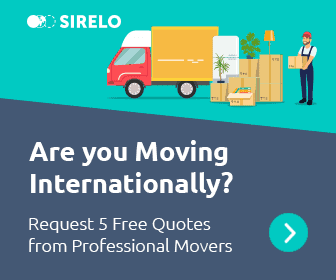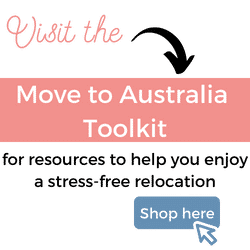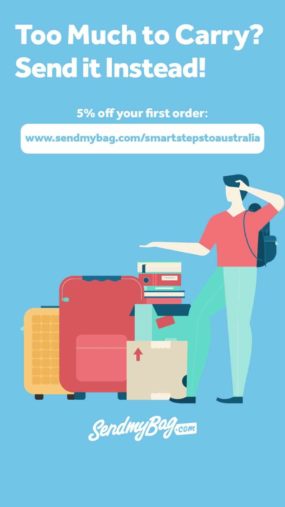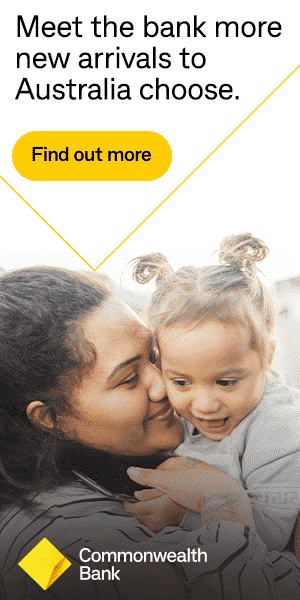“How do I move to Australia?” is the question that I get asked the most often so I decided to write a detailed post that will help you find out everything you need to know about how to move your life to the other side of the world so you can work and live in Australia.
If you’re at the early stages of working out how to move to Australia, Beginner’s Guide: How to move to Australia will outline exactly what you need to do to move to Australia in simple steps and with links to the relevant sites so you can find out the most up-to-date information about emigrating to Australia.
This post contains compensated links. The full disclosure is available in the footer.
Table of Contents
Step one: Can I move to Australia?
Most people think that the first step in the process of moving to Australia is deciding should I move to Australia? It makes sense to begin with making that big decision about whether to make the move or not because you need to know if you really want to do it before you invest the time and energy in the next steps. However, I don’t think it’s worth spending too much time focusing on making the definite decision to move to Australia until you know you stand a good chance of getting a visa (and what that visa looks like – some visas are better than others!).
When you know that you have the option to get a visa for Australia, then you can make a decision about whether you definitely want to make the move to Australia. (I highly recommend booking a staycation type of holiday where you live when that time comes so you can step away from your regular commitments and get focused on deciding if the move to Australia is right for you and figure out your next steps. When we were trying to decide whether to make the move to Aus, we booked a week away in Cornwall just to get away from our lives for a week so we were free to think about our options for the future and it really helped us gain clarity). If it turns out you have no chance of moving right now, you don’t need to waste energy trying to make such a huge, life-changing decision. (Although be aware, that just because it might turn out that you don’t yet have the skills or points needed to move to Australia, there are often options for you if you are determined to make it happen, so don’t give up at the first hurdle without a fight!).
Various visas are available (partner visas, parent visa, working holiday visas…) but for this article, we’re going to focus only on skilled visas. In order to get a skilled visa for Australia, you will need a job that is on the skilled occupation list and to meet the other eligibility criteria for that visa including age, English language skills, health and character.
Is yours one of the jobs needed in Australia?
I regularly see people in my free Move to Australia Facebook community saying they’re planning on moving to Australia but when they list their occupation it’s not a skill that is needed in Australia. People often think that because they want to move to Australia, they are going to be able to do it. The thing to remember is that in order to move to Australia on a skills-based visa, you must have skills in demand in Australia (other visas are available but for a skilled visa, you need the experience and qualifications for an occupation on the list). When it comes to skilled visas, Australia has a migrant programme to plug a skills gap in the country.
Having a trade or profession doesn’t guarantee you entry to Australia – that occupation must be one that is needed here in Australia so it needs to be on a skills shortage list in Australia. There are lots of different versions of the skills shortage list/skilled occupation list online for Australia and many of these (listed on unofficial pages) are out of date. The place to get the current, up-to-date list of occupations in demand in Australia is on the Home Affairs website and on the State and Territory pages.
There are lots of migration agent sites out there that have listings about visas and skills shortage lists, but they get out of date quickly and some companies don’t update their sites very often so I always recommend people begin by doing research on the government website to learn about the skills in Australia that are in demand. Find the current skilled occupation list here.
It’s not the easiest thing to trawl the government website searching for information about in-demand skills in Australia but it’s good to do some initial research yourself to see if you can identify one or two occupations that might be applicable for you. Click into those occupations and see how they are described. Remember that some occupations over here might have slightly different job titles – what matters is that you do the job that matches the description and criteria rather than having the exact same job title.
Next, have a click around the Visa Finder to see if you can see a clear and obvious visa option. Again, be mindful of the fact that although the government site might not be the easiest to navigate, it is the most up to date place to find visa information and migration agent sites and Facebook groups can be very quickly out of date.
Have a look at the eligibility for the different visas and consider things like your age and health. Are you under the maximum age bracket that is set for that visa? Do you think you can score enough points to get a visa?
Speak to a migration agent for professional visa advice
When you’ve done some initial research yourself, it’s time to reach out to a migration agent for some professional advice.
Whether you decide to go on to use a migration agent for your visa application and skills assessment is totally up to you (I have a post that looks at the reasons you might want to use a migration agent here for some useful background reading) but I always recommend people speak to at least one or two migration agents before starting the migration process as it just helps you double-check that you are on the right track with your visa plans.
A good agent will be able to look at your resume and will be able to confirm your visa options. Some agents charge a fee for an initial review, and others offer this initial check for free.
Be aware: Getting a personal recommendation for a migration agent is really useful as there are some unreliable companies out there, but be mindful that Facebook groups contain a lot of false promotion. I frequently block people in my Facebook group for giving fake endorsements of migration agents as if they are a happy customer (when in actual fact they are a relative or friend or they work for the company). Choose wisely and do your due diligence!
Find out about my FREE Facebook group here!
What to do if the migration agent can’t match you to an occupation or visa?
If the migration agent can’t see a pathway for you to move to Australia, talk to them about the reasons. It could be that your age, past criminal record or health is hindering your chances of getting a visa and there isn’t a lot you can do about those things, unfortunately. If it’s down to your skills or experience, sometimes there could be a way for you to top up your skills with extra education, retrain in a certain area to gain points or work harder on the English language test to get a higher score. Don’t give up at the first hurdle – look for a solution! An agent will be the best person to help you identify a way to get a visa. Try to think outside the box with the agent and consider all of your options.
Make sure you are totally honest with your agent as they are there to guide you. There is no point in lying about a health condition or a past criminal conviction – the truth will come out after you’ve paid for your visa and it could result in a rejection which would be an expensive mistake.
Let’s assume now that you’ve chosen a visa and you have an occupation that is on the Australian skills list…
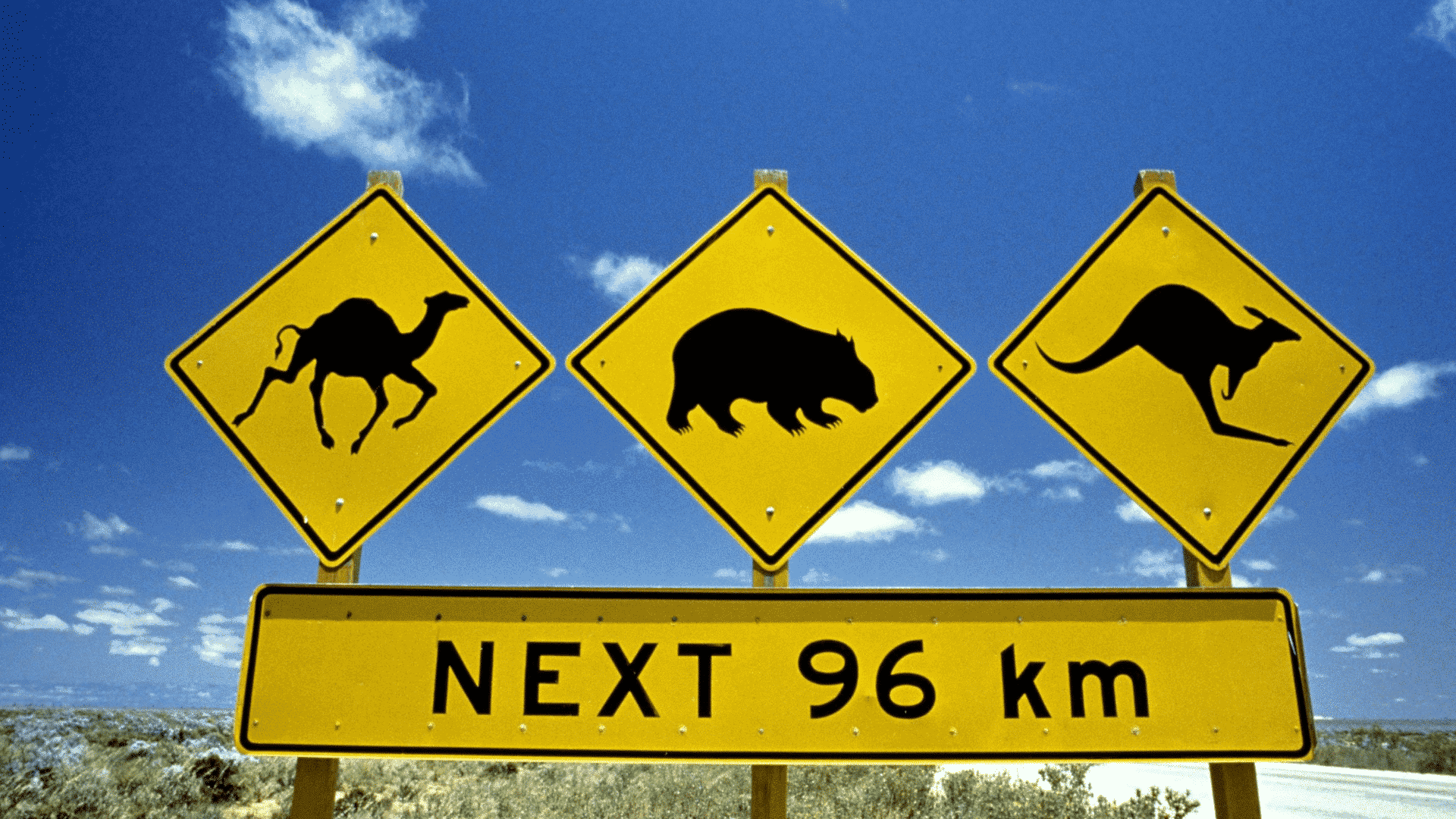
Step two: Should I move to Australia and can I afford to make the move?
When you know you CAN move to Australia, this is the time to begin thinking in detail about whether the move really is what you want.
Making the decision once and for all involves you considering if you really feel committed to moving abroad and making a new life for yourself. There is a lot to think about – leaving family and friends behind, potentially selling your home, leaving your job…it’s very emotional and it can be a difficult decision to make.
Read this related post: How much does it cost to move to Australia?
A really important part of making the decision about whether to migrate to Australia is also around your finances. Can you comfortably afford to make the move? To fully understand this you need to work out the costs involved in moving and relocating (plus considering how 2020 has made financial security so important).
I have a list you can download that breaks down all of our relocation costs when we moved from the UK to Australia in 2014 (as a family of five on a 189 visa) that you might find useful. You can sign up for access to my FREE resource library to get it here.
Create a budget for your move and list all of your potential moving expenses plus consider what savings you’d like behind you when you arrive (depending on the visa you’d be coming on, there might be a stipulated amount for this). This will help you stay on track with your saving and spending.
It’s a really good idea (especially given what is going on in the world as I type this) for you to have enough money to live on in case it takes you a while to find a job, or in case later down the line you end up out of work for a period of time. The current world situation shows that savings are really important for security as nobody knows what is around the corner.
When you know that you want to move to Australia and you can afford to move to Australia, and you have the skills to move to Australia you can move on to the next stage…

Step three: Getting your Australian visa application underway
You’ve gone through possibly the most difficult phases – you’ve made the decision to go and know that you’re eligible to migrate to Australia on a skilled visa. That is two big hurdles out of the way! Next, it’s time to focus on getting your Australian visa for living in Australia.
Appoint a migration agent or do it yourself
A migration agent will walk you through everything you need to do for your skills assessment, Expression of Interest and your visa application. This post gives you information about choosing an agent.
If you decide to complete the paperwork yourself, the steps will be the same but you won’t have somebody guiding you through it all and making sure you’ve provided everything that is needed. It is totally up to you which option you choose.
Complete your skills assessment for your Australia immigration
The first step of your Australian visa when you’re going to emigrate to Australia is to complete a skills assessment. The assessing authority and requirements for this will be different for different occupations (a migration agent will guide you if you’re using one) and some include tests. When you are confident you have completed all of the skills assessment paperwork, you submit everything to the skills authority for an assessment. You need to have a successful skills assessment in order to submit your Expression of Interest.
Complete an English language test if needed
If you need the points, or if your occupation requires it, you may need to take an English language test and meet certain requirements. This is harder than it sounds even for native English speakers so do your homework and prepare for it! You can read this post about English language tests here. Again an agent will be able to guide you as to whether this is needed, which test level to take (depending on your occupation) and what points you need.
When you have your successful skills assessment and your English language test (with the scores you need achieved), it’s time for the next step….
Step four: Submit your Expression of Interest
When you’ve successfully completed your skills assessment and English test, you (or your agent) will submit your Expression of Interest. Your details go into the pool and then it’s just a waiting game!
If you have an agent, they will likely be able to give you an idea of the wait times at the moment for your occupation.
Use this time to get your application ready for the next stage.
Step five: Receive your invitation to apply and submit your visa application!
When the time comes, you will (hopefully) receive an invitation to apply for your visa.
Hopefully you have everything ready to go so when you receive your invitation to apply for your visa you can submit your visa application straight away.
When your application is being processed, you’ll have a case officer appointed to you and they’ll advise you to get your medicals done and request your police checks.
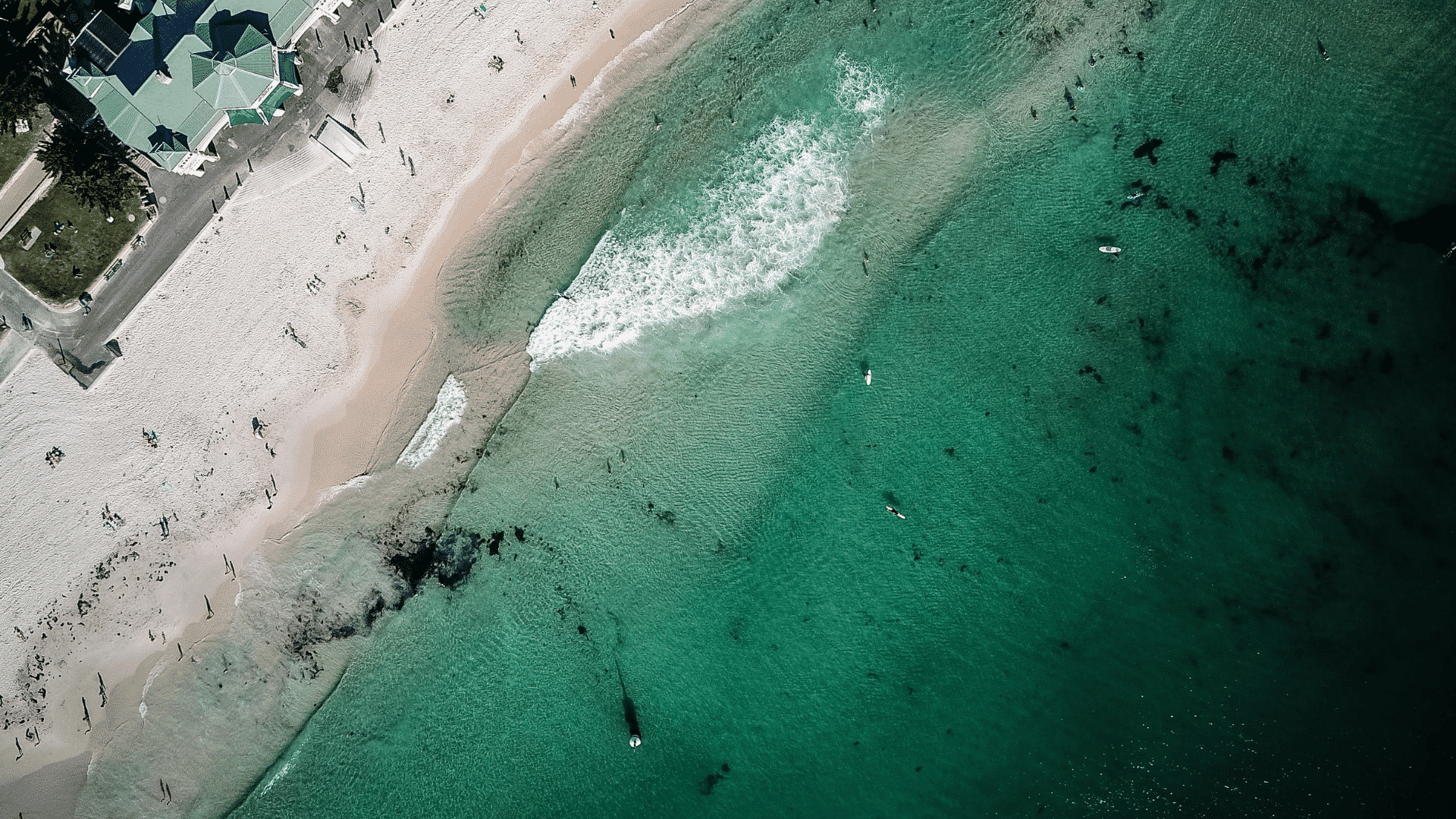
Step six: Receive your visa grant
That’s it! You’ve done it! Assuming that everything was in order with your Australian visa application, and your medicals and police checks were accepted, you will be sent your visa grant.
It’s worth remembering that the travel component of a permanent residency visa expires 5 years from the grant date (then you either need to buy Resident Return Visas in order to travel abroad or you can apply for citizenship if you’re eligible (you can read all about getting citizenship here). Another thing to remember is that if you change your passport at any stage, you need to ensure your visa gets attached to your new passport.
If the visa you’ve been granted is a temporary work visa, you should find out the process for moving on to a permanent residency visa if you want to stay in Australia long-term or permanently. An agent will help with this.
What next and how to get more support and inspiration?
Once you’ve got your visa grant, it’s time to get started on the moving admin tasks. You need to think about shipping, banking, short term accommodation, currency transfers and ALL THE THINGS! I won’t lie – there is a lot to do. Getting the visa grant is just the first step of many, but once you have your visa the rest is plain sailing as you know that your move is going to happen.
I understand that it can feel overwhelming as there is so much to do and it’s hard to stay on top of it all while also keep your jobs and family and regular life going too. You don’t have to figure it all out alone though. You can save yourself time, money and a lot of headaches by allowing me to support you through the adventure (honestly, this is my passion).
Join the FREE Facebook community and follow my Facebook page
My Move to Australia free Facebook community is a great first step for you. It’s filled with people who can help and support you on your journey. It’s an awesome place to ask questions and a place for you to be with other people who are in the process of moving (plus lots who have made the move already). Make sure you answer the joining questions – people who don’t answer them aren’t accepted.
Also, make sure you’re following my Facebook page as that’s where I share lots of news articles, inspiring posts and generally keep you up to date with what is going on in the world of migration.
Get the Ultimate Emigration Checklist
If you’re ready to get things moving and get organised, my Ultimate Emigration Checklist covers everything you need to do before, during and after your move. I’ve collated everything into a handy checklist broken down by timescales so you don’t need to worry about forgetting a thing or doing things in the wrong order. Plus it comes with some bonus sheets to help you track your account closures and manage your to-do lists. It’s a one-off cost and you get access to lifetime updates.
>> Grab the Ultimate Emigration Checklist here <<
Get started on your migration journey
I hope Beginner’s Guide: How to Move to Australia helps you to get started on your migration journey! Remember, you don’t need to go through all of this alone. This blog is here to support you through the process and so is my Facebook group. The best time to get started on your migration journey is RIGHT NOW! You never know what is around the corner (skills lists change, your personal situation might change, anything could happen!) so if you are considering it, there is no time like the present to get things underway.
Good luck!
Share the post!
Did you find Beginner’s Guide: How to Move to Australia helpful? If so, I would love for you to give it a share.
Enjoyed this post? Check out these next:
Open your Australian bank account from overseas
Do you need one way insurance to move to Australia?
Get these shipping tips for moving your belongings to Australia
